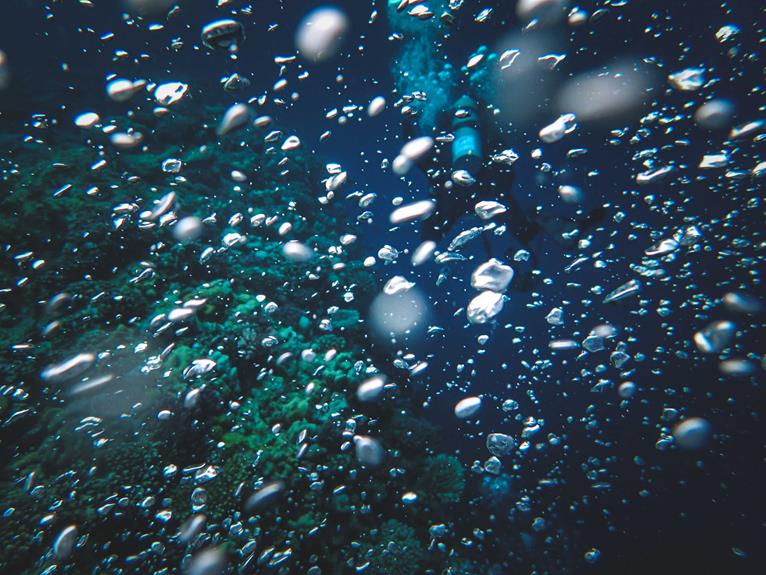In the vast realm of underwater exploration, scuba diving enthusiasts must carefully consider the amount of air contained within their diving tanks. Like the beating heart of their adventure, the tank's capacity and pressure dictate the duration and safety of their submerged journeys.
With a compression ratio of approximately 204 times, a standard scuba tank holds 80 cubic feet of air, compressed to an astounding pressure of 3,000 pounds per square inch.
Join us as we delve into the intricacies of scuba tank air, exploring its impact on buoyancy, consumption rate, and the indispensable importance of proper training and maintenance for a secure diving experience.
Key Takeaways
- Average scuba tank holds about 80 cubic feet of air at 3,000 psi, which is equivalent to the size of a telephone booth.
- Scuba tanks are filled with compressed air, with a compression ratio of approximately 204 times to fit the 3,000 psi.
- The size and weight of the scuba tank impact the diver's buoyancy and maneuverability.
- Monitoring air pressure, practicing proper buoyancy control and efficient breathing techniques, and planning dives according to air consumption rate are essential for safety and maximizing bottom time.
Scuba Tank Capacity and Pressure
How much air does a scuba diving tank hold and at what pressure?
The average scuba tank holds about 80 cubic feet of air at a pressure of 3,000 psi (pounds per square inch). To put this in perspective, 80 cubic feet of air is roughly the size of a telephone booth.
The air in the tank is compressed over 200 times to fit into the tank, with a compression ratio of approximately 204 times.
The size and weight of the tank can vary depending on its capacity, and it has an impact on the diver's buoyancy and maneuverability.
Additionally, the tank pressure affects the amount of air available for breathing underwater, and the pressure in the tank determines the dive depth.
It is important for divers to consider these factors when planning their dives to ensure safety and proper air consumption.
Size and Weight of Scuba Tanks
The size and weight of scuba tanks can vary depending on their type and capacity, and they play a crucial role in determining a diver's buoyancy and maneuverability.
Scuba tanks are designed to be portable and easily carried by divers, but their size and weight can still have an impact on the diver's ability to control their buoyancy and maneuver underwater.
A larger tank, while providing more air for the diver, can also add extra weight and make it more challenging to maintain neutral buoyancy. On the other hand, a smaller tank may be lighter but may require more frequent air refills.
Experienced divers often learn buoyancy control techniques to compensate for the size and weight of their scuba tanks, allowing them to achieve better control and maneuverability underwater.
Air Consumption and Bottom Time
Scuba divers' air consumption rate and bottom time are influenced by the capacity of their scuba tanks. Maximizing air efficiency and extending bottom time are crucial considerations for divers.
Here are three techniques for achieving these goals:
- Proper Buoyancy Control: Maintaining neutral buoyancy helps conserve energy and reduces air consumption. By mastering buoyancy control, divers can minimize unnecessary movements and stay relaxed, resulting in longer bottom times.
- Efficient Breathing Techniques: Slow and deep breaths are key to conserving air. Divers can practice techniques such as slow inhalation and exhalation, using their diaphragm for breathing, and avoiding rapid, shallow breaths. These techniques optimize the air-to-movement ratio and extend dive duration.
- Equipment Maintenance: Regularly servicing and maintaining scuba equipment ensures optimal performance. Well-maintained gear reduces the risk of air leaks and malfunctions, allowing divers to breathe efficiently and extend bottom times.
Impact of Tank Pressure on Air Availability
As scuba divers consider maximizing their air efficiency and bottom time, the impact of tank pressure on air availability becomes a crucial aspect to examine.
The effect of tank pressure on breathing efficiency is significant, as it directly affects the amount of air that can be drawn with each breath. When the tank pressure is high, the air molecules are packed more densely, allowing for more oxygen to be inhaled. This increases breathing efficiency and extends the diver's air supply.
Conversely, as tank pressure decreases, the availability of air decreases, leading to a higher breathing rate and decreased bottom time.
Additionally, the impact of tank pressure on dive depth should not be overlooked. Higher tank pressures allow for deeper dives, as the compressed air provides the necessary gas supply to withstand the increased pressure at greater depths.
Therefore, divers must carefully monitor their tank pressure to ensure optimal breathing efficiency and to plan their dives accordingly.
Importance of Proper Buoyancy Control
Proper buoyancy control is crucial for divers to maintain optimal air efficiency and extend bottom time, as it directly impacts their ability to navigate underwater and conserve air with regular practice. Achieving neutral buoyancy allows divers to hover effortlessly in the water column, reducing the need for excessive propulsion and energy expenditure.
Here are three key techniques for effective buoyancy control:
- Streamlining: Divers should strive to minimize drag by maintaining a streamlined body position. This involves keeping limbs close to the body and avoiding sudden movements that can disrupt buoyancy.
- Breathing Control: Skillful control of breathing can significantly impact buoyancy. Deep, controlled breaths help maintain a consistent lung volume, which affects buoyancy. Divers should practice slow, relaxed breathing to achieve and maintain neutral buoyancy.
- Weight Management: Proper distribution and adjustment of weights is essential for buoyancy control. Divers should regularly assess and fine-tune their weight system to achieve neutral buoyancy at different depths and with varying equipment configurations.
Improving Air Consumption and Dive Time
Effective management of air consumption and dive time is crucial for divers to maximize their underwater exploration and safety. By implementing proper breathing techniques and regular equipment maintenance, divers can improve their air consumption and extend their dive time.
Efficient breathing techniques, such as slow and deep breaths, help to reduce the amount of air consumed during a dive. This can be achieved through relaxation and maintaining a calm and controlled breathing pattern.
Additionally, regular equipment maintenance ensures that the diving gear, including the regulator, is functioning optimally, minimizing any air leaks or malfunctions that could lead to increased air consumption.
Safety Considerations for Scuba Diving
Safety in scuba diving is paramount for the well-being and protection of divers. Here are three important safety considerations for scuba diving:
- Monitoring air pressure: Divers should always check the tank pressure before each dive. The amount of air available for breathing underwater is directly affected by the tank pressure. Monitoring the air pressure throughout the dive is crucial to ensure that there is enough air remaining for a safe ascent to the surface.
- Emergency procedures: Divers should be well-versed in emergency procedures, such as sharing air with a buddy. In the event of an out-of-air situation, knowing how to safely share air can be a lifesaving skill. Regular practice and training in emergency procedures are essential for handling unexpected situations underwater.
- Proper training and certification: To ensure safe scuba diving, divers should undergo proper training and obtain certification. This includes learning essential safety protocols, emergency response techniques, and dive planning. Proper training equips divers with the knowledge and skills to handle potential risks and challenges that may arise during a dive.
Proper Tank Inspection and Maintenance
When conducting a scuba tank inspection and maintenance, it is important to thoroughly examine the tank for any signs of damage or wear. This includes checking for dents, scratches, or corrosion on the tank's exterior.
Additionally, the tank valve should be inspected for any leaks or signs of wear. It is also crucial to inspect the tank's hydrostatic test date, which indicates when the tank was last tested for safety.
Proper tank maintenance involves regular cleaning of the tank's exterior and ensuring that the valve is functioning correctly. Tank inspection procedures should also include checking the tank's O-ring for any signs of damage or deterioration.
Importance of Training and Certification
To ensure safe and proficient scuba diving, training and certification are of utmost importance. Here are three reasons why training and certification are essential:
- Safety: Scuba diving involves inherent risks, and proper training equips divers with the knowledge and skills to handle potential dangers. Training programs cover essential topics such as dive planning, emergency procedures, and equipment use. Divers learn how to react in challenging situations, minimizing the risk of accidents and injuries.
- Skill Development: Scuba diving requires proficiency in various techniques and procedures. Training programs focus on developing diving skills such as buoyancy control, underwater navigation, and efficient air consumption. By honing these skills through training, divers can enhance their overall diving experience and enjoyment.
- Certification Requirements: Many dive sites and operators require divers to hold a valid certification. Certification verifies that divers have completed the necessary training and have demonstrated competence in essential diving skills. It ensures that divers are well-prepared and adhere to industry safety standards.
Frequently Asked Questions
What Are the Different Types of Scuba Tanks Available?
Different sizes and materials of scuba tanks are available to cater to divers' needs. These tanks come in various capacities and can be made of aluminum or steel. Each type has its advantages and considerations, impacting buoyancy and maneuverability during dives.
Can I Refill My Scuba Tank With Regular Air or Do I Need to Use Compressed Air?
Refilling scuba tanks with regular air is not recommended. Compressed air, which is the standard for scuba tanks, ensures proper breathing gas quality and safety. Always follow safety precautions and guidelines when refilling scuba tanks.
How Often Should I Have My Scuba Tank Inspected and Maintained?
Scuba tank maintenance frequency is crucial for diver safety. Tanks should be inspected annually by a qualified technician and undergo hydrostatic testing every five years. Common scuba tank issues include corrosion, valve malfunctions, and leaks.
Are There Any Restrictions on Carrying Scuba Tanks While Traveling?
Carry on restrictions and safety regulations govern the transportation of scuba tanks while traveling. These regulations ensure the safety of passengers and crew by addressing issues such as proper handling, labeling, and storage of scuba tanks during air travel.
Is It Possible to Increase the Capacity of a Scuba Tank to Have More Air Available for Longer Dives?
Increasing scuba tank capacity to have more air available for longer dives is not possible as it is determined by the tank's size and pressure. Safety measures such as monitoring air consumption and proper training are essential for longer dives.

